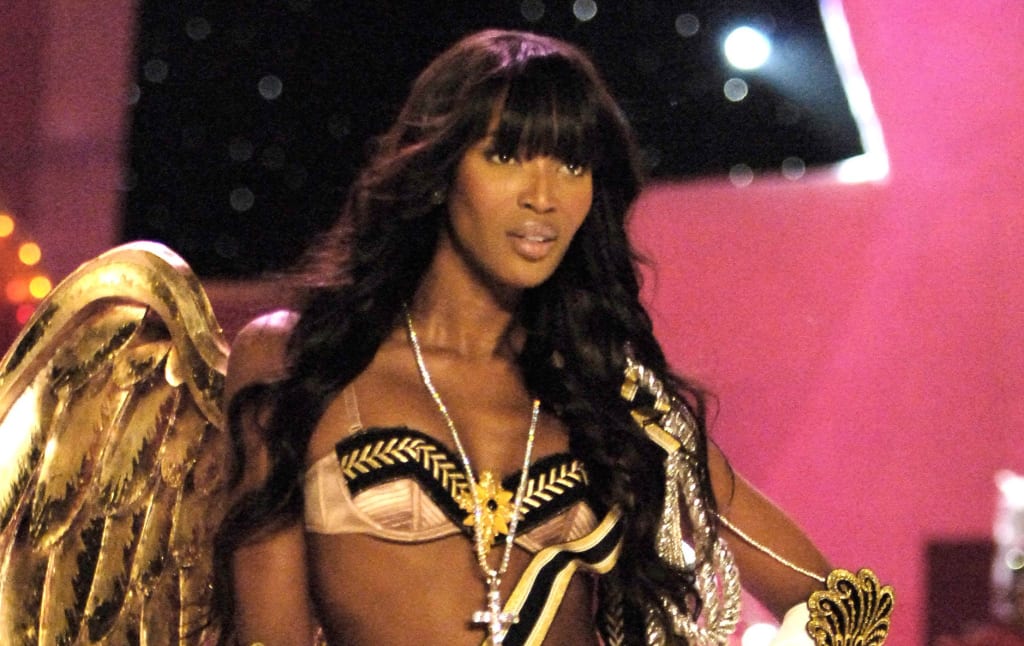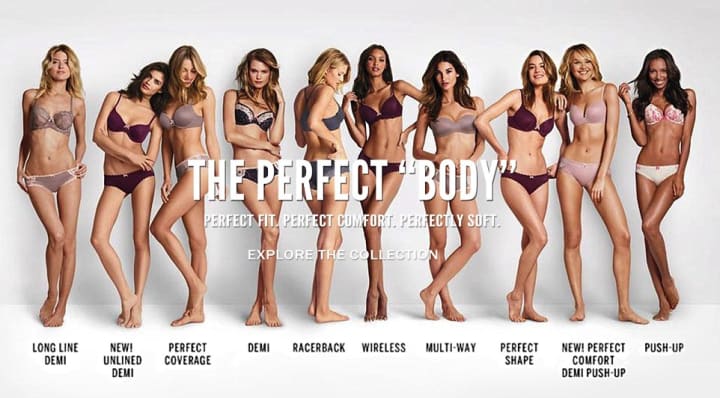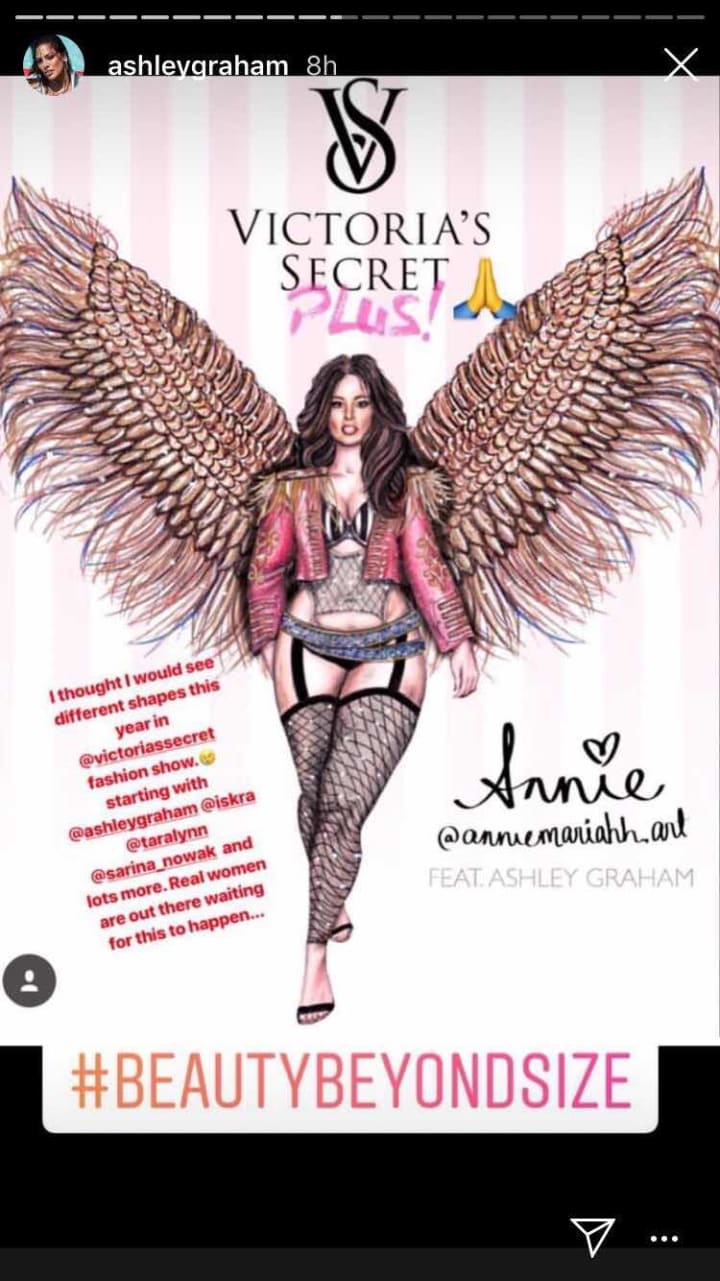How Victoria's Secret Sparks Internalised Misogyny in Women Across the World
Internalised Misogyny and How it Creates Girl-on-Girl Hate

Every year during the autumnal month of November, the buzz of the upcoming Victoria's Secret fashion show takes over every single social media platform and tabloid news outlet. The distinguished fashion show that was once a magical display of luxury lingerie and the worlds most elite supermodels, has now become a weird music festival, with a repetitive parade of designs and social media stars. Gone are the days where young women would glue themselves to their sofas to witness the legendary Naomi, Karolina and Adriana own the sparkling runway. Victoria's Secret once stood as an elite fashion show that only booked the fiercest of the fierce supermodels, however due to their significant decline in popularity and tv viewings, it comes as no surprise that they have now turned to booking less experienced "Instagram models" to represent the brand (and of course, conduct free marketing for them).
Victoria's Secret has evidently abandoned their standards in a desperate pursuit to hold onto the popularity they once had. What started as subtle changes quickly led to them going back on their "we hire models with great personalities" narrative, when they began to hire models who have faced racist controversies, such as Gigi Hadid, Devon Windsor and Taylor Hill.
As a well established brand that targets their products towards women, and gains views from a mostly female audience—you'd think female empowerment would be one of their main priorities. However, it's become evident that "female empowerment" defined by Victoria's Secret means empowering skinny, slim, genetically female women only. Ed Razek, the chief marketing officer of Victoria's Secret (and one of the people in charge of castings), recently responded in an interview with Vogue to why the brand doesn't hire transgender models, stating that he didn't think there should be "transexuals" in the show "because it is a fantasy."

Victoria's Secret has faced numerous controversies since their very first fashion show in 1995. One of them included their 2014 "The Perfect Body" campaign, that made it painfully clear to the millions of women who had been supporting the brand for years, that their size simply wasn't favoured if they didn't look like the angels themselves.
Intentionally or not, Victoria's Secret has continuously promoted girl-on-girl hate through their marketing, which has only been counteracted by viewers with even more girl-on-girl hate, leaving women across the world in a endless cycle of insecurity each year when November rolls around. Whilst Victoria's Secret does cater to a larger rage of body types in their stores, their fashion shows have always been strict with only presenting skinny/slim models. Whilst I personally wouldn't bash them for using the models that they prefer on their runway (as all fashion labels do but are not always called out on in the same way), this does become a problem for me and controversial as they continue to promote their models as the most beautiful women in the world, and women that others should aspire to be like.

Many, including model Ashley Graham that has built her career on representing plus sized women who aren't as recognised in the industry, have wrongly argued that yes, the Victoria's Secret models are beautiful, but they aren't real women. Every year, Instagram users can expect to see Ashley Graham upload the same (or similar) posts of her in angel wings, protesting the lack of diversity amongst Victoria's Secret models. Whilst it struck an activism cord in many women the first few times, the whole thing has now become tired and something I can no longer support.
It's alarming that a significant amount of women feel the need to retaliate and oppose body shaming, by putting down other women. This isn't body positivity, nor is this girl love, it's unnecessary girl-on-girl hate which doesn't create any solution. The fact is, a woman's size, shape, gender identity, race or any other factor, doesn't determine whether or not she's a real woman. There aren't two categories that women fit into regarding their size: "skinny" or "curvy." There are hundreds and thousands—maybe even millions of other shaped women who don't fit into either of these categories. Victoria's Secret models, angels and women across the world who bare the same measurements are beautiful real women. Plus sized models and women of the same measurements are real women, and every other woman in between is also a real woman.
Internalised Misogyny:
The subconscious presence of hateful, sexist, and misogynistic language onto oneself or to another girl, rather than from men to women.
The models aren't at fault for the many flaws of the multi-million dollar company, nor are the women who fit the brands "image" (if you can call it that). Girl-on-girl hate is a significant issue amongst women that does't necessarily stem from jealousy, but an incessant need to prove that some women are better than others. This can only be the fault of internalised misogyny where we as women have been socialised to compete with each other, but for what exactly? Male approval? Or just bragging rights over one another that we are more valuable? Intersectional feminism is the simple cure to internalised misogyny and girl-on-girl hate.
Imagine how powerful women could be in this world if we joined forces rather than continue to berate each other. Imagine how much stronger we'd be if we lifted our sisters up instead of tearing them down to make ourselves look better.
Check out the great article 'Victoria's Secret Doesn't Want Plus-Size or Trans Women Walking the Runway' written by Hazel Cills for Jezebel.com, to see more shocking and controversial things that have been said by Razek, the powerful white man with harmful beliefs that dominates Victoria's Secret.
References
Cills, H. (2018). Victoria's Secret Doesn't Want Plus-Size or Trans Women Walking the Runway. Available: https://jezebel.com/victorias-secret-doesnt-want-plus-size-or-trans-women-w-1830347972. Last accessed 15th Nov 2018.
Independent.IE. (2018). 10 most depressing things models have said about training for the Victoria's Secret Fashion Show. Available: https://www.independent.ie/style/beauty/body/10-most-depressing-things-models-have-said-about-training-for-the-victorias-secret-fashion-show-34745273.html. Last accessed 15th Nov 2018.
Katz, E. (2018). How Victoria's Secret Normalised Discrimination.Available: https://mic.com/articles/192413/victorias-secret-discrimination-plus-size-transgender-models#.pUiguEgds. Last accessed 15th Nov 2018.
Luxen, M. (2014). Victoria's Secret changes course on 'Perfect Body' ads.Available: https://www.bbc.co.uk/news/blogs-trending-29958907. Last accessed 15th Nov 2018.
Opelka, B. (2017). The impossible standards you need to meet to become a Victoria's Secret Angel. Available: https://www.thisisinsider.com/impossible-standards-for-victorias-secret-angel-2017-11. Last accessed 15th Nov 2018.
Phelps, N. (2018). “We’re Nobody’s Third Love, We’re Their First Love”—The Architects of the Victoria’s Secret Fashion Show Are Still Banking on Bombshells. Available: https://www.vogue.com/article/victorias-secret-ed-razek-monica-mitro-interview. Last accessed 15th Nov 2018.
Saks, E. (2016). Girl-on-Girl Hate. Available: https://mnwomenscenter.wordpress.com/2016/02/01/girl-on-girl-hate/. Last accessed 15th Nov 2018.






Comments
There are no comments for this story
Be the first to respond and start the conversation.